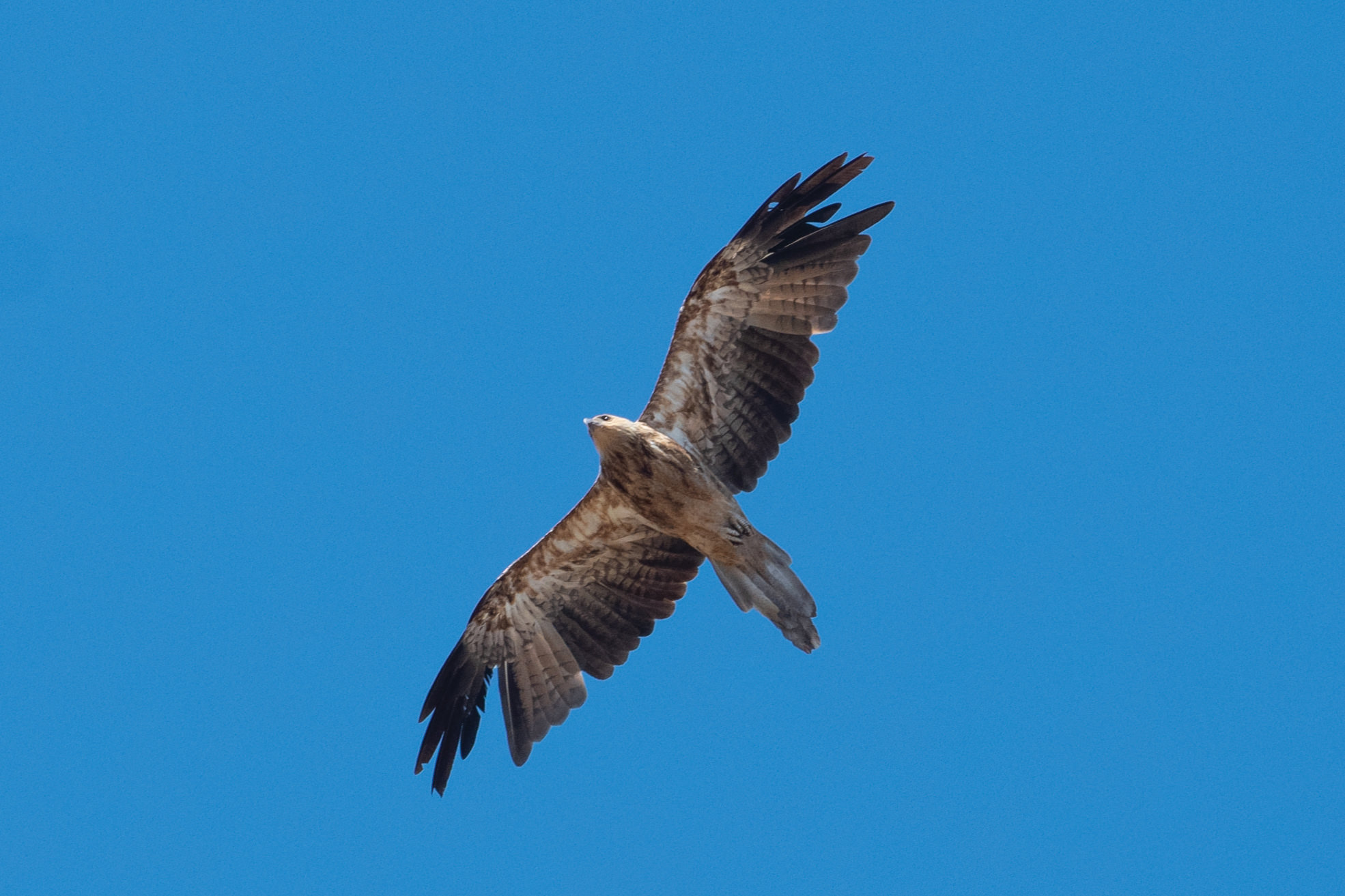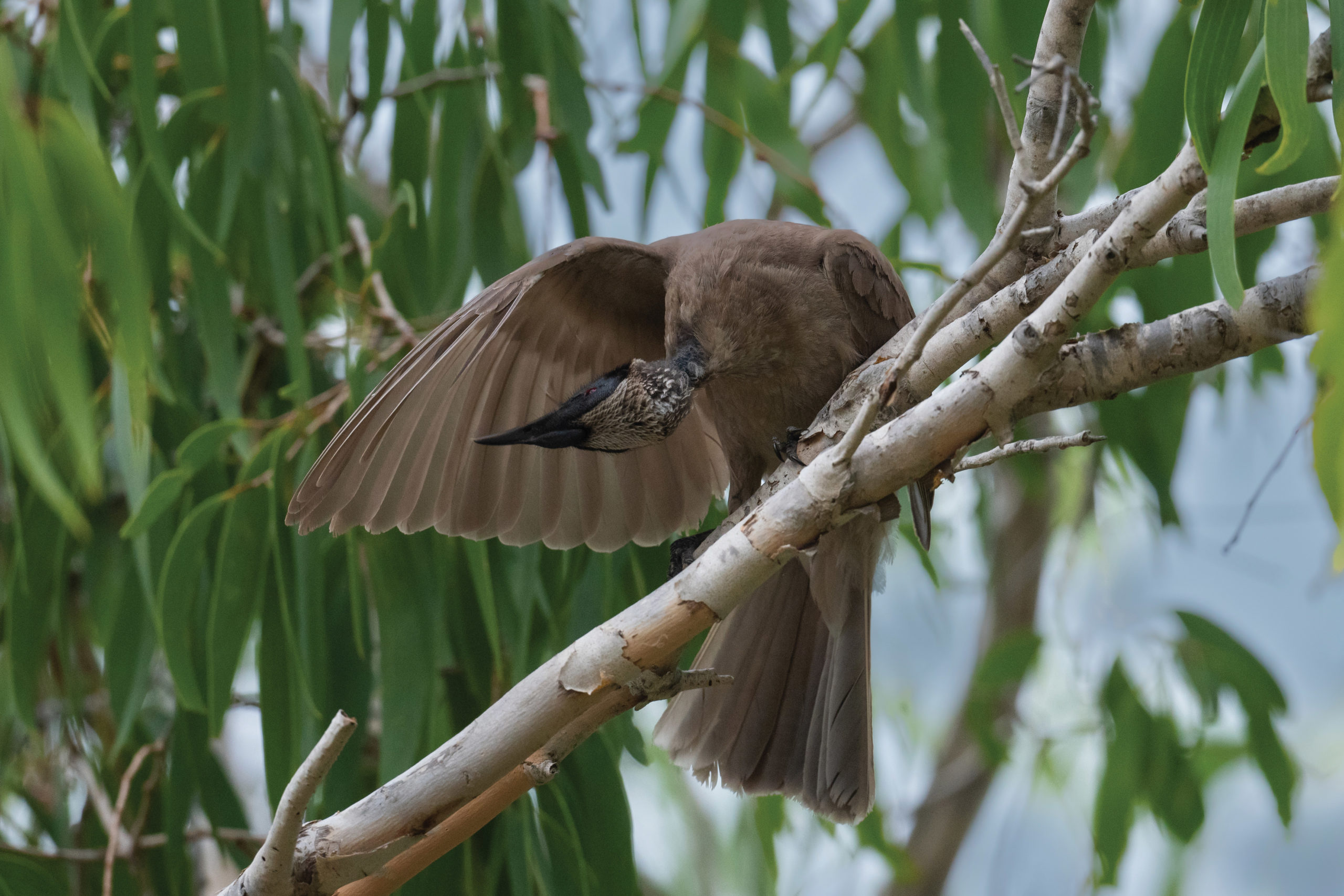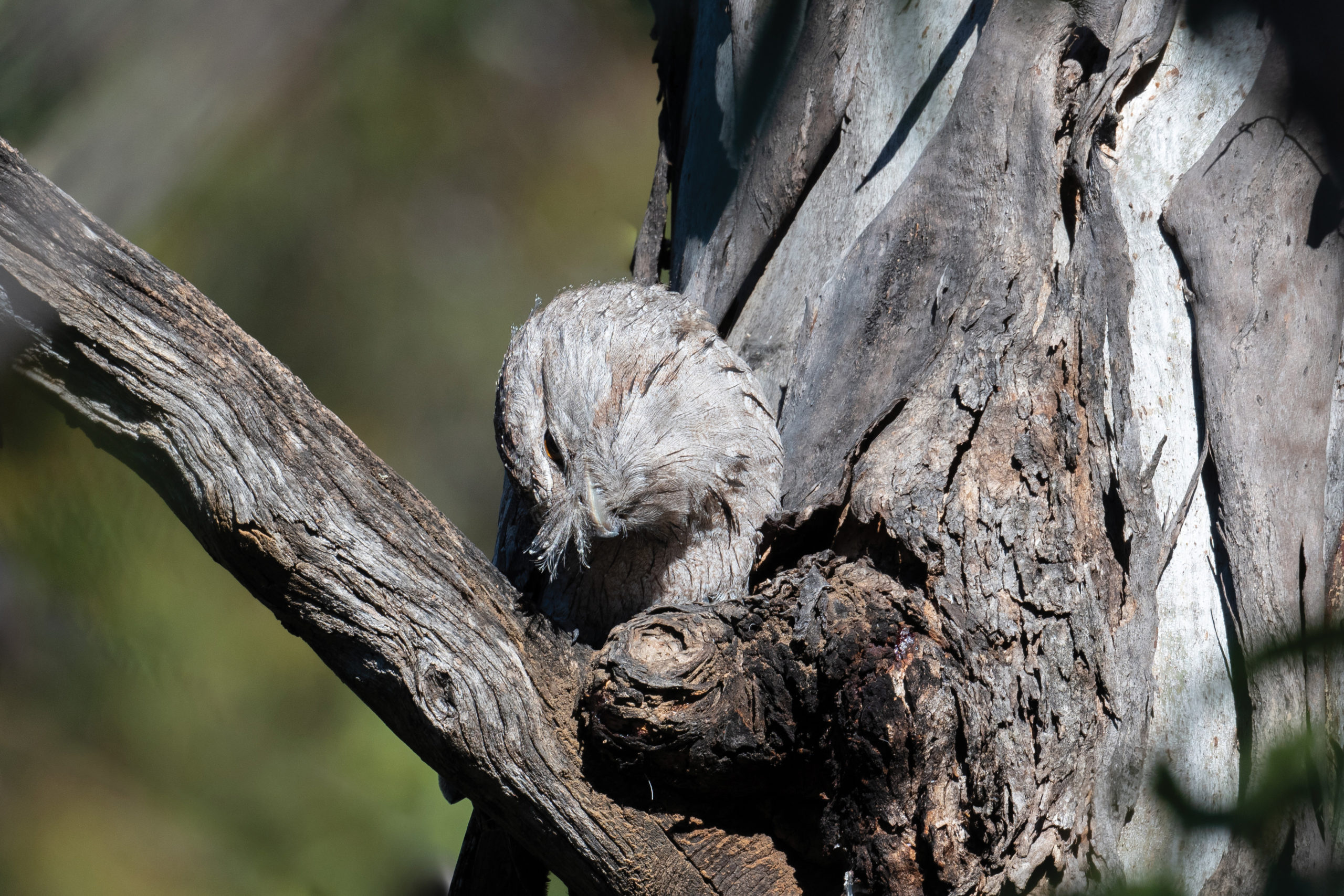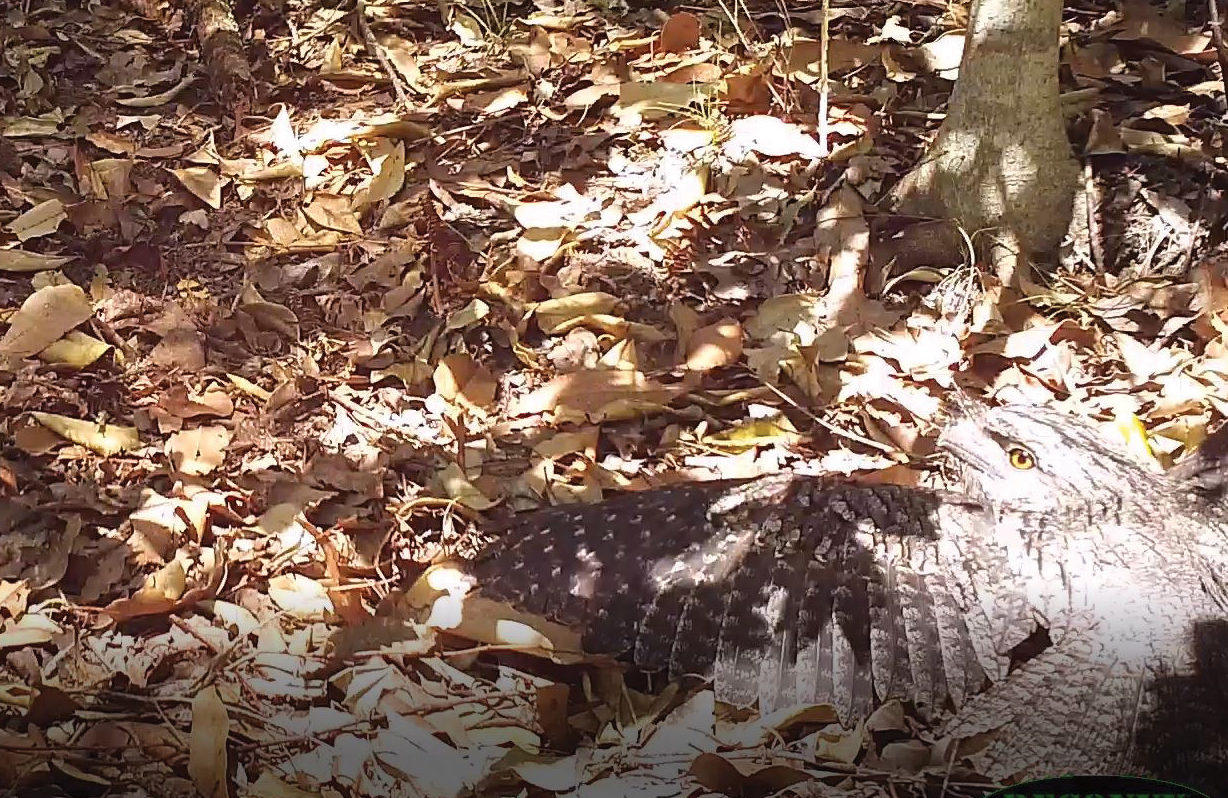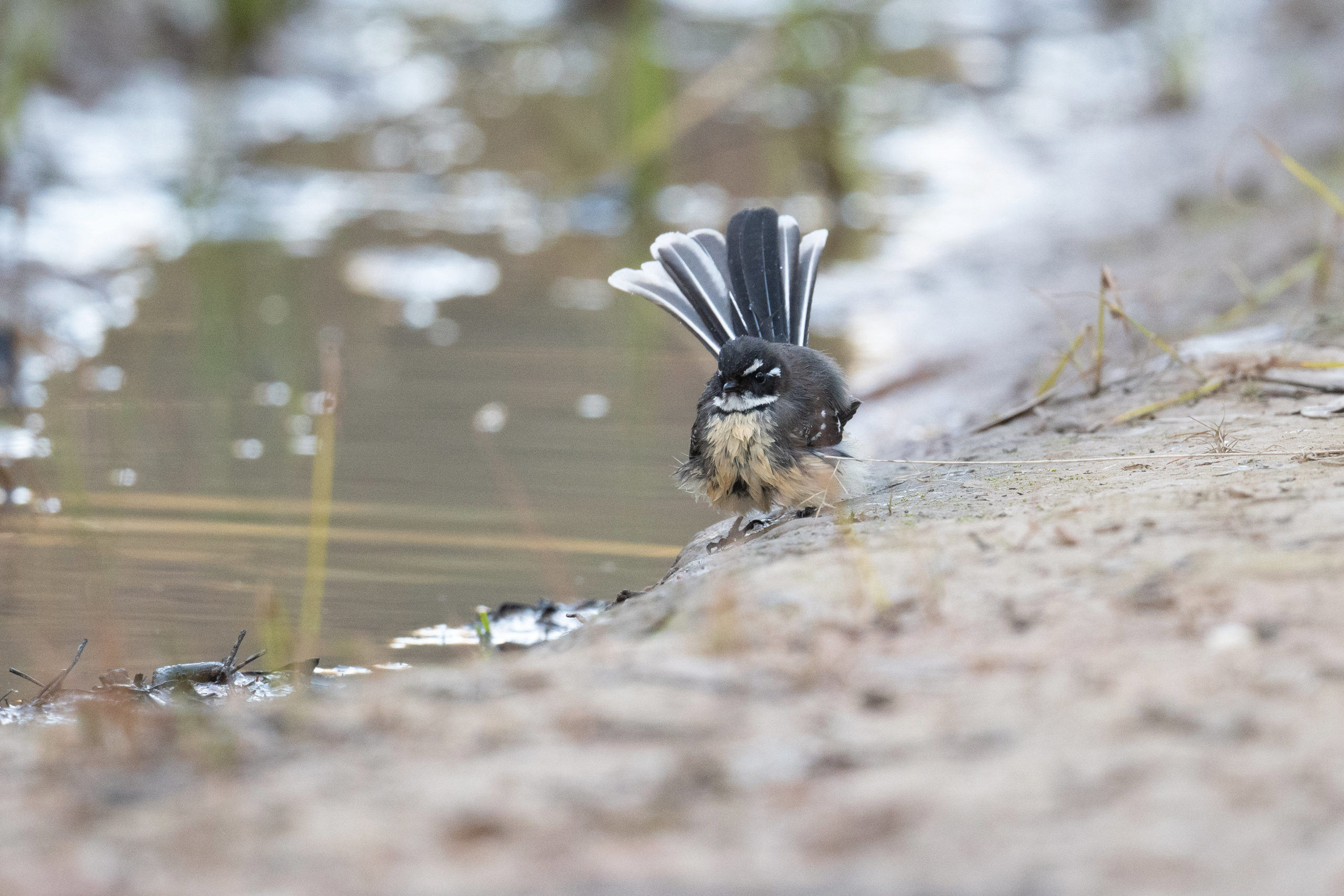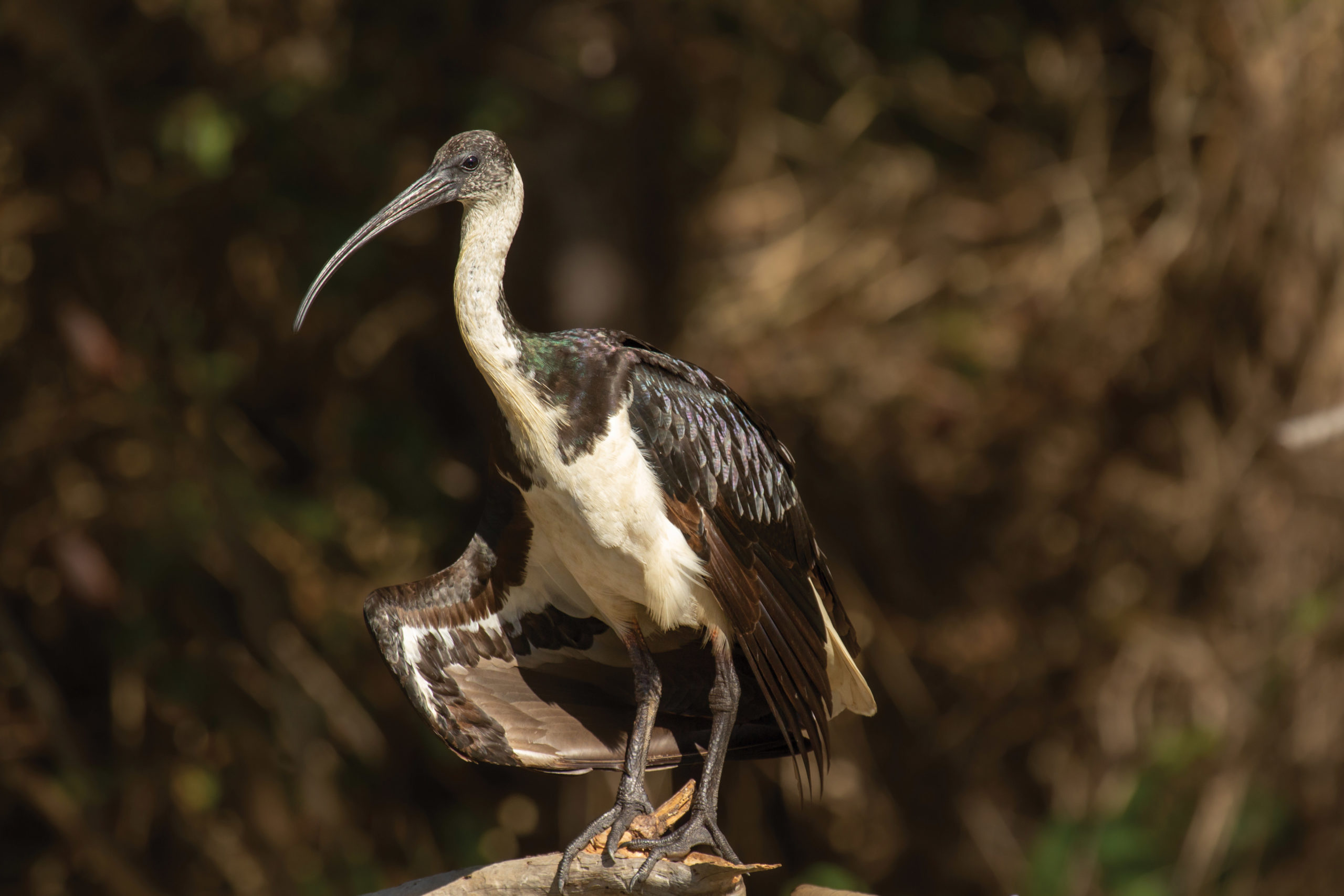Like humans, birds spend a lot of time looking after themselves. Feathers are like a bird’s hair, clothes and make up all in one package. So it’s not surprising birds end up spending a lot of time looking after their feathers. Healthy feathers mean the bird has good insulation from the cold, waterproofing for when its wet and good flight as feathers are important for aerodynamics. If your feathers are uncared for, you’re not going to be as attractive as a mate compared to another who puts more time into looking after themselves.
Bird feathers are like human hair in that they are not living and are essentially dead. But they are more complex than a strand of human hair. The shaft that runs down the middle of the feather has rows of fine filaments called barbs coming off both sides. Along each of these barbs are interlocking filaments called barbules. Usually, these barbules interlock so the feather appears smooth. When birds get their feathers ruffled up from brushing up against vegetation or interacting with other birds the barbules can become disorganised and no longer interlock together neatly. If you’ve ever pulled backwards on a feather, you have unzipped the barbules. If you then smooth out the feather this reorganises it and zips up the interlocking barbules.
Birds spend a large portion of each day looking after their feathers and because of this a lot of bird behaviour can be attributed to their care. You might think a dip in the bird bath just cools a bird down and lets it have a drink, but it also allows birds to give their feathers a good wash and they can often be seen afterwards preening their feathers as well. When birds fluff their feathers up it helps re-zip the barbules back together.
Preening is a maintenance behaviour that birds use to look after their feathers and keep them in good condition. Preening is the birds ‘me’ time to sort their feathers out and get the barbules to interlock again, helping to keep all the parts of the feather working together efficiently and aerodynamically. Preening also removes dirt and extends the life of feathers.
The most common form of preening is nibbling which involves working a feather with their bill from the base to the tip. Nibbling assists in redistributing feathers, distributing preen oil, finding parasites (like lice and mites) and rejoining unzipped barbules. Stroking feathers is another kind of preening but is not as efficient as nibbling.
Most birds have a gland above the base of their tail feathers (the preen or uropygial gland) where they get preen oil from. Preen oil is a mix of waxes, fatty acids and water and helps to reduce bacteria, fungi and parasites that cause feathers to degrade. Birds rub the uropygial gland with their beak collecting preen oil on it and then rub the preen oil through their feathers to distribute it.
Some birds including emus, ostriches, cassowaries, rheas, kiwis, some parrots and some pigeons do not have a uropygial gland or preen oil. Instead, they have powder down feathers which continuously break down into a powder that is used in a similar way as preen oil.
An important part of preening is keeping external parasites (ectoparasites) in check. Ectoparasites include lice and mites and usually irritate the skin or damage the feathers. Studies have found that birds with damaged beaks are not able to preen their feathers and keep ectoparasites in check as effectively as birds with undamaged beaks.
Sunning, Dust Baths and Anting
Birds like to stretch out in the sun and can enter an almost trance-like state where they are enjoying the warmth of the sun. This behaviour is called sunning. They fan out their tail feathers and spread their wings exposing their feathers to the sun, warming themselves up and/or drying off after rain or a dip in the bird bath. Water birds especially are often seen sunning themselves to dry their feathers. Sunning may also have benefits in controlling ectoparasites by disturbing the parasite and making it easier to find when preening.
Dusting is another behaviour thought to help with parasite control. Having a good dust bath is something that domestic chicken owners will be familiar with, but many other birds also like to ruffle themselves up in fine dirt or sand distributing the particles through their feathers. It is thought that the fine particles dry out and kill or disturb parasites enough to make it easier to remove them while preening. Dusting can also remove excess preen oil.
An unusual method of ectoparasite control is anting. This is where a bird deliberately allows ants onto its feathers. There is active anting where the bird applies an ant to its feathers. Passive anting is where the bird permits the ants to swarm on it by sitting where ants are active near an ant nest or ant trail. Many bird species have been observed anting. Birds that are anting usually have a particular posture where they are prostrate or semi-prostrate on the ground with their wings held out and open which can look very similar to birds sunning themselves.
Ants are not the only species used to ‘ant’. Other species which have been observed include beetles, bees, millipedes and aromatic leaves. Another theory about anting is that it is used by birds to prepare the invertebrate before they eat it e.g. ants will use up all their formic acid on the feathers before the bird eats them. Another idea is that anting is a form of sensory self-stimulation (the ants give the birds a massage?) or that it helps to decrease skin irritation during a feather moult.
Only species of certain ant families have been observed to be used in anting. These ants spray or exude formic acid so support the theory that anting is for ectoparasite control and/or to help irritation. Some evidence suggests formic acid helps control mites. Whatever reason the bird has for anting it must be beneficial considering the importance of their feathers to birds.
An extreme example of anting is by rooks in England which used discarded, still-burning cigarette butts to smoke their feathers with. Given the range of theories about anting there is still a lot to learn about bird behaviour!
Stephanie Reif
Land for Wildlife Officer
Sunshine Coast Council
Photos by Deborah Metters

